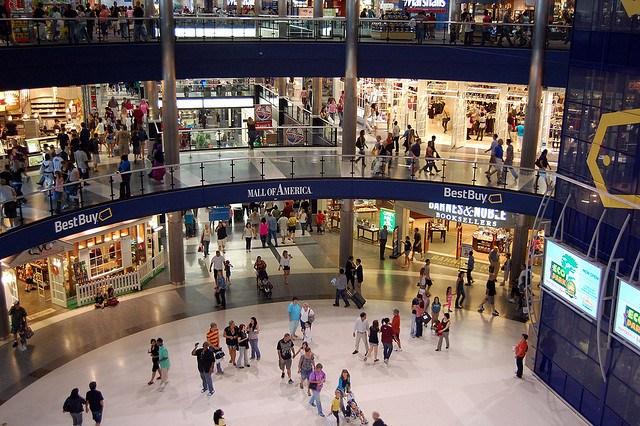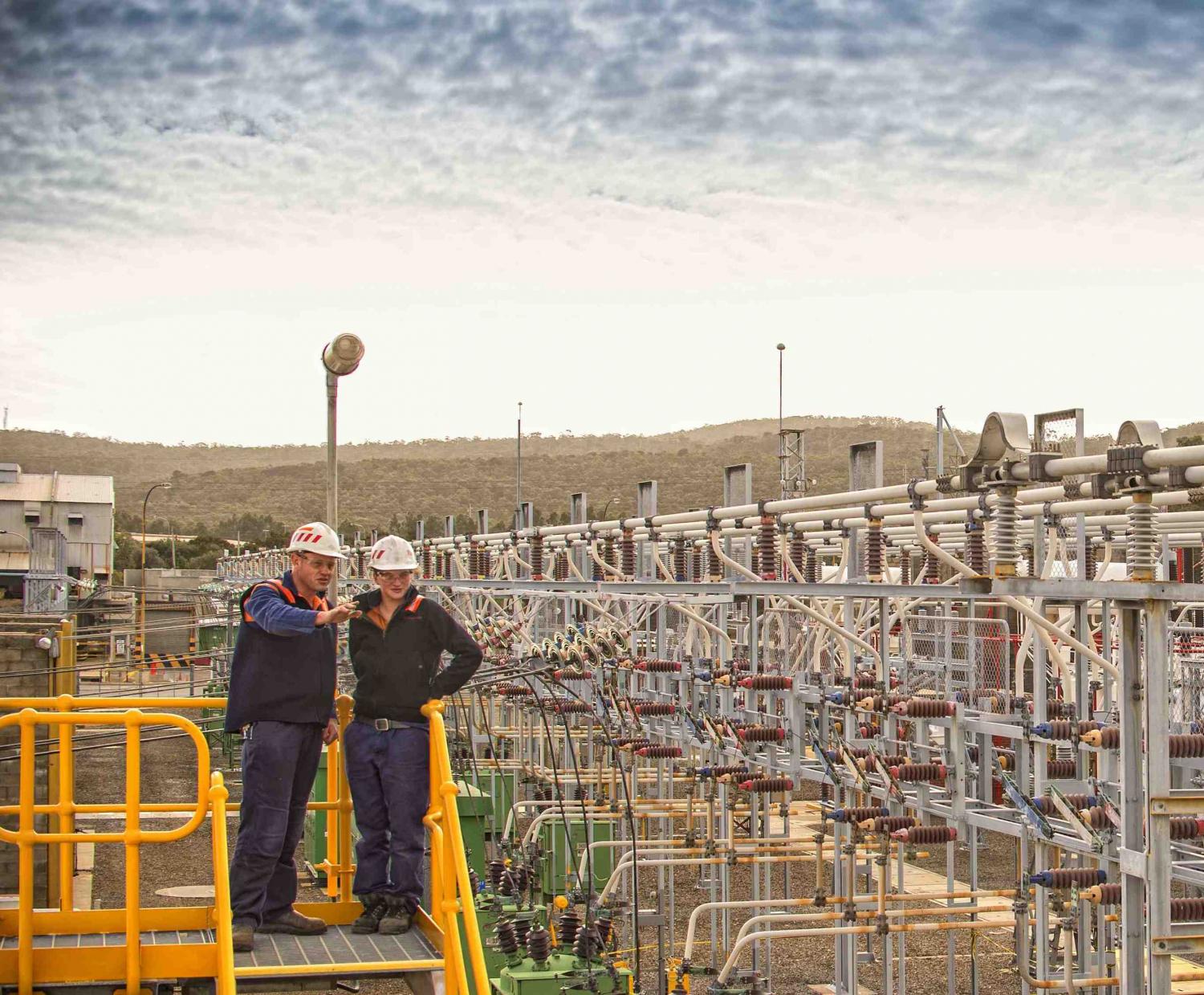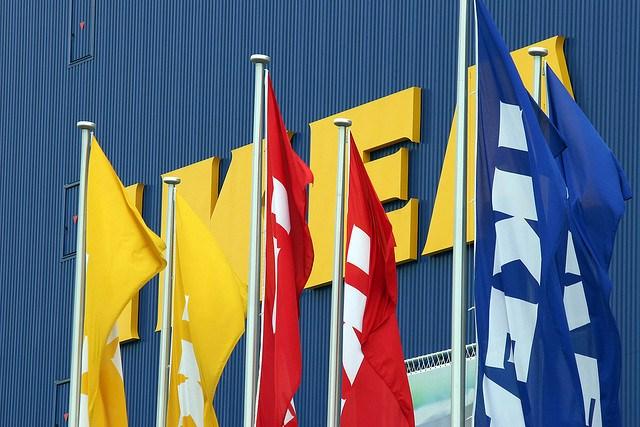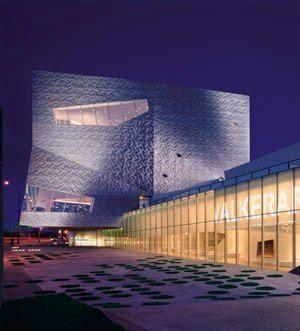5 Essential Practices for Retailers, Brand Owners and Suppliers to Transition to Safer Chemicals


By Beverley Thorpe
Manufacturers, retailers and suppliers are increasingly being mandated or asked voluntarily to eliminate hazardous chemicals of concern in their products and manufacturing processes.
This is good news. Unfortunately, the alternatives they choose as replacements may not be comprehensively screened for human health and environmental impact. This leads to ‘regrettable substitution,' a term I find captivating in its understatement, particularly when the substitute ends up being persistent in the environment or a hormone disrupting chemical. Part of the problem is that chosen alternatives are often kept confidential which diminishes the public’s faith that progress to safer chemicals is actually being made.
NGO campaigns have recognized the need to go beyond calls for a simple chemical ban in products. Too often we see hazardous flame retardants in furniture or waterproof coatings on outdoor hiking gear being substituted with similarly hazardous halogenated chemicals. So, how can product manufacturers and retailers protect themselves from the business risk of potentially adopting the next hazardous chemical to be regulated? And how can they show leadership in helping to move our economy to a toxic-free future?
These 'Five Essential Practices for Retailers, Brand Owners and Suppliers' were developed by the Workgroup for Safe Markets to give clear signals to the marketplace that increased public disclosure of chemical information and the phase-out of hazardous chemicals using 'informed substitution' will increasingly define company leaders.
Chemical Assessment Tools, lists of chemical groupings to avoid and examples of best practices are now available to help companies adopt informed substitution practices. Regulatory mandates for increased disclosure, such as Washington state’s Children’s Safe Products Act, as well as voluntary initiatives, such as LEED’s new credits for material disclosure and chemical screening, will continue to build the drum beat for more chemical information disclosure. NGOs are entering into detailed dialogue with companies and retailers offering resources and expertise. We believe the following will increasingly define advocacy, regulatory and voluntary requests in the marketplace.
"Radical Transparency was one of the guiding principles in creating Seventh Generation. There are several forms of transparency a company may engage in. For example, a business that isn’t already required to may willingly disclose its product ingredients, or it may disclose the sources and the means of obtaining the raw materials." – Jeffrey Hollander, Seventh Generation
The Five Essential Practices for Retailers, Brand Owners and Suppliers
1. Retailers, brand owners and suppliers should establish a goal of reducing and eliminating the use of chemicals and materials of concern in products and manufacturing processes, and replacing them with alternatives that are transparently safer. Their publicly available chemicals management plans should include metrics and clear timeframes to measure continual progress towards this goal. As a priority, the Working Group suggests that retailers and brand owners identify relevant chemicals of high concern in products and supply chains, volume of those chemicals, and set goals for reducing both the number and volume of these chemicals.2. Retailers and brand owners should know and publicly disclose the chemical ingredients in their products, product packaging and manufacturing processes. They can do this by requiring their suppliers to give full chemical disclosure including of fragrances, additives, contaminants, raw materials, colorants, flavorings and chemical by-products, and they should make this information publicly available online and/or on product packaging. A good first step is to disclose all chemicals of high concern in products including those under proprietary agreements.
3. Retailers, brand owners and suppliers should identify chemicals and materials in their products and/or supply chains for chemicals of concern for substitution with safer alternatives that have undergone comprehensive hazard screening. The hazard profile of a chemical can be determined using comprehensive human health and environmental endpoints and all data gaps for chemical information will be clearly stated.
4. Retailers, brand owners and suppliers should conduct or require alternatives assessment for chemicals of concern as set out in the Business-NGO Principles of Alternatives Assessment. Alternatives include a wide range of options ranging from simple elimination to informed substitution for safer chemical, material and non-chemical alternatives.
5. Retailers, brand owners and suppliers should commit to continuous improvement in eliminating all chemicals and materials of concern in their supply chains, and support innovation and public policies that promote green chemistry, sustainable product design, as well as manufacturing processes that protect human health and the environment. Retailers, brand owners and suppliers should publicly report on their progress in transitioning to safer chemicals and materials on their websites and in their shareholder reports.
These 'Five Essential Practices' were developed jointly by partners in the Workgroup for Safe Markets, including: Breast Cancer Fund, Center for Food Safety, Center for Environmental Health, Clean and Healthy New York, Clean Production Action, Commonweal, Healthy Building Network, International Campaign for Responsible Technology, Learning Disabilities Association of Maine, Natural Resources Defense Council, Safe Minds, Safer Chemicals Healthy Families, and Women’s Voices for the Earth.
Image credit: Flickr/jpellgen
Beverley Thorpe is a Consulting Co-Director at Clean Production Action, a non profit that works with NGOs, businesses and governments to design and deliver strategic solutions for green chemicals and sustainable products. She is also the co-coordinator of the Workgroup for Safe Chemicals, a US based collaboration of groups working to shift the market to safer chemicals use.
How a Local Community Wins from Supply Chain Investment


By Phil Preston
Last week, almost by chance, I stumbled on an industrial company that helped build the capacity of a local supplier to compete against an offshore alternative.
What I found most interesting about this and similar examples is the lack of airtime they get. We get blinded by the headlines, which generally only appear when something goes wrong, such as job cuts, accidents or scandals. Meanwhile, there can be greater things going on under the surface.
I had the pleasure of travelling from Sydney to the northern part of my home state, Tasmania (Australia) for a family reunion of sorts. It’s a relatively small island state that has historically relied on forestry, mining and the public sector for employment.
More recently, tourism has accelerated on the back of boutique food, wine and arts attractions, as well as stunning natural scenery. Diversity of industry and employment is critical to its future.
Bell Bay Aluminium
By way of background, the smelting operation began in 1955 and is part of Pacific Aluminium, a wholly-owned subsidiary of Rio Tinto. It’s a large exporter, electricity consumer and (direct and indirect) employer in the state.
While staying nearby at George Town, situated on the north coast, I met up with Lou Clark, community relations specialist at Bell Bay Aluminium. We hadn’t met before, and I was interested in hearing about the company's community engagement challenges and successes. Like many companies of its size and local importance, Bell Bay provides an array of grants and support for community needs.
It was almost by accident that our conversation drifted onto the company's local capacity-building initiative.
Supporting local engineering
The aluminium smelting operation progressively replaces anode rods when they wear out and makes modifications for energy efficiency. Before committing to a Chinese supplier, Bell Bay's business improvement team worked collaboratively with George Town-based CPT Engineering, assisted by a business action learning program.
The end result was that CPT matched the price, and a four-year supply agreement worth $3.7 million was awarded. Benefits include:
- Savings on logistics
- Three new employees at a local firm
- Significant investment in equipment and training
- Establishing a culture of supply chain innovation
Although the contract size is modest compared to Bell Bay’s $690 million contribution to Gross State Product, there are longer-term benefits associated with the supply chain investment.
Lou explained that, in an industry where employee numbers have been declining, finding a way to boost local supply and production is the right path to take. It benefits the community and sets an example for future industry practices.
Why we should be cautiously optimistic about the future
When I stumble across examples like this, I wonder: How many similar examples are out there? While we are prone to being dazzled by the bright lights of giving, volunteering and social responsibility programs, initiatives embedded in company operations are arguably more powerful.
Uncovering and telling these stories helps to resolve the tensions we feel between people, planet and profit. It helps build a bridge between the challenges we face today and the world we seek to create for tomorrow. As William Gibson noted:
"The future is already here — it's just not very evenly distributed"
What can you do to be part of it?
The skills and behaviors that got us to where we are today are not the same ones that will take us forward. McKinsey noted as much in an article about nurturing CEOs of the future.
Understanding and addressing community needs is becoming critical to business success. I encourage managers and executives to look at their business through a new lens and find areas where community engagement can play a meaningful strategic role.
This could be done in many ways, such as:
- Reconsidering the purpose of the business in society;
- Looking for new socially-aligned product opportunities; or
- Addressing social issues to boost productivity.
In Bell Bay’s case, helping the local community leads to productivity benefits in terms of logistics savings and improving the socio-economic conditions in its workforce capture area. It’s also helping to increase the innovation capacity and value-add of local suppliers.
Is there a similar business opportunity for you and your supply chain? I’d love to hear about any successes or challenges you have encountered.
Image credit: Bell Bay Aluminium's Switchyard, Rob Burnett Images
Phil Preston helps employees and businesses devise community engagement strategies. He can be contacted via [email protected] or followed @PhilPrestonTwit
Video: Maggie Davies of Net Impact Talks Diversity at NI14


"Zooming out entirely: The global challenges that we face are massive and very complex, and it's going to require everyone being involved," Maggie Davies, chief of strategy and talent for Net Impact, said at the 2014 Net Impact conference in Minneapolis.
"We need diverse people and diverse perspectives in order to be the most effective."
In this clip, which is part of our Talking Diversity video series, Davies goes on to explain what Net Impact is doing to address diversity, including a recent partnership with Symantec that allowed Net Impact to grow its network, particularly in historically black and women's colleges. She also shares success stories from participants in those programs, so be sure to stick around for the full two minutes.
Maggie Davies is the Chief Strategy and Talent Officer at Net Impact, where she leads strategy and business planning, talent development and human resources, and the conference. Previously, as Deputy Director and then COO, she also led programs, evaluation and measurement, technology, and operations. Prior to joining Net Impact, Maggie spent six years as a management consultant with the global strategy consulting firm Bain & Company in the San Francisco and Sydney offices. While at Bain, Maggie helped clients in a wide variety of industries on projects ranging from strategy to organizational and profit improvement, including growth strategies for two major Bay Area nonprofits. She holds a Master and Bachelor of Engineering from the University of Michigan, and an MBA from the Stanford Graduate School of Business, with a certificate in Nonprofit Management. Maggie has spoken on topics including talent, impact measurement and nonprofit strategy, and was selected by Independent Sector as a 2013-2014 NGen Fellow.
Ikea Joins the Crowd and Heads for Greener Palm Oil Sources


An encouraging number of companies have jumped on the bandwagon for sustainable palm oil these days. Unilever, Mars, Nestlé and Starbucks are among some of the larger food companies that have picked up the trend in past years. Some have adopted their own strategies to ensure their sources are sustainable, while others have joined the Roundtable on Sustainable Palm Oil.
But food isn't the only place that palm oil is used, as the latest convert to this sustainable approach demonstrates. According to last month's press release, Ikea has decided to make the switch.
"As a relatively small industry user of palm oil, Ikea promotes a collaborative approach to ensure the greatest positive impact," the company said. Ikea apparently uses palm oil in candles, rattan in its wicker furniture and a small number of food products it sells in its stores.
The company joined the Roundtable on Sustainable Palm Oil and has laid out a list of targets for the next two years. Its first target is to make the switch to sustainable sources by December 2015. The company has also added two other goals to its list that it says underscores its commitment to sustainability:
- No deforestation: "Forests of high value, for conservation or carbon storage purposes, will be protected." Ikea says it aims to ensure all new palm oil developments take place on land where "biodiversity and natural vegetation are already highly degraded."
- "No new development on peat," irrespective of the designated depth
The company says it has set a December 2015 deadline for global suppliers to demonstrate how they will meet the above additional requirements. It says its target date for meeting those additional requirements is December 2017.
This isn't the first time that Ikea has embraced a plan to transition to sustainable palm oil sources. In November 2010, the company announced that it would begin purchasing RSPO certificates in order to "help stimulate sustainable palm oil production." According to Ikea, it took this move in an effort to transition away from paraffin and decrease its related carbon footprint.
According to recent statements by Greenpeace, it has been working with Ikea to make the change to sustainable palm oil. Greenpeace USA Sustainability Campaigner Joao Talocchi said Ikea's move is part of a broader effort of companies to adopt more sustainable sources for this highly-used product.
According to statistics provided by Procter & Gamble, which has been working to increase sustainable sourcing in palm oil production, at least a third of the oil that is available comes from small companies in Indonesia or Malaysia, which face their own unique challenges when it comes to transitioning to sustainable sources.
In October, Procter & Gamble partnered with the Malaysia Institute for Supply Chain Innovation to host a workshop on the challenges faced by small holder farms. Greenpeace is said to have had a role in bringing about the workshop. The workshop was designed to address the common issues that make it difficult for companies like Ikea to transition to a sustainable palm oil supply chain.
Image credit: OiMax
Walgreens and Staples earn perfect score in Corporate Equality Index


America's largest drugstore chain Walgreens and office supplies giant Staples have received perfect scores of 100% on the 2015 Corporate Equality Index (CEI), a national US benchmarking survey and report on corporate policies and practices related to LGBT workplace equality, administered by the Human Rights Campaign Foundation.
This marks the 10th year Walgreens has earned a perfect score from the CEI index and the fifth for Staples.
“As a company that prides itself on its commitment to diversity and inclusion, we know that fostering the growth and development of employees is an essential component of our future, regardless of individual differences,” said Kathleen Wilson-Thompson, chief human resource officer of Walgreens.
“It’s important that all associates feel valued for who they are and know that their ideas and viewpoints and beliefs will help contribute to Staples’ success,” commented John Burke, chief culture officer, Staples, Inc.
The 2015 CEI rated 734 businesses in the report, which evaluates LGBT-related policies and practices including non-discrimination workplace protections, domestic partner benefits, transgender-inclusive health care benefits, competency programs and public engagement with the LGBT community.
Walgreens efforts satisfied all of the CEI’s criteria resulting in a 100 percent ranking and the designation as a Best Place to Work for LGBT Equality. Fortune 500 companies that participated in the survey had an average rating of 86.
Staples was previously named one of the “Best Places to Work for LGBT Equality” by the HRC. The company has Associate Resource Groups (ARGs), a formal community of committed associates who support Staples business results, global diversity strategy, community involvement and associate engagement, including an ARG called “Out At Work,” for lesbian, gay, bisexual, transgender associates and allies.
For more information on the 2015 Corporate Equality Index, click here.
Picture credit: © Filmcrew | Dreamstime com - Equality Highlighted Photo
Imports of illegal timber fall in five key countries


Estimated imports of illegal wood-based products into France, Japan, the Netherlands, the UK and the US have declined since 2010, research by Chatham House has found.
The downward trend has been partly driven by progressive policies implemented by governments and the private sector. It is also the result of progress in many producer countries, as well as broader shifts in trade.
However, nearly 4% by volume of all wood-based imports into these countries are still estimated to be at high risk of illegality, with a collective value of over $7 billion. Furthermore, Japan remains behind other importers, with high-risk imports currently estimated to comprise 10% of the country’s total.
“Governments and the private sector in all five consumer countries have made concerted efforts to address the issue of illegal imports of wood-based products, including by passing legislation, implementing public procurement policies, signing up to certification schemes and working in partnership with producer countries. However, all have room for improvement,” said Alison Hoare, senior research fellow at Chatham House.
“France has been slow to adopt legislation setting out sanctions for importing illegal products prohibited under the EU Timber Regulation, and concerns have been raised as to whether these will be sufficient to ensure effective enforcement. The allocation of sufficient resources for enforcement of this Regulation will also be crucial, not just in France, but also in the Netherlands and the UK. In Japan, weak voluntary measures limit the government’s ability to eliminate illegal products from the market, while the US could improve the effectiveness of its legislation through better implementation procedures,” she added.
The emergence of China as a processing hub for the world’s forest sector means that it is now one of the main suppliers of wood-based products for these five countries, and has become one of the main sources of high-risk products. In 2013, over 50% of wood-based products imported into the US, and 30% of those into the Netherlands and Japan, came from China. Improving traceability in these supply chains will be crucial in the fight against the illegal timber trade.
Picture credit: © Rezkrr  | Dreamstime com  - Timber Pile Photo
Green Bronx Machine Turns Bronx Students Into Urban Farmers


“For a seed to achieve its greatest expression, it must come completely undone. The shell cracks, its insides come out, and everything changes. To someone who doesn’t understand growth, it would look like complete destruction.” – Cynthia Occelli
One of the most soul-satisfying things about attending the Social Innovation Summit is the number of people you meet there who have taken great ideas for social change and translated them into action. Nowhere is the impact of social change more important than in the educational sector, and the summit, held on Nov. 19-20 in Silicon Valley, did not disappoint on this score. The incredible line-up of speakers included the founders of such innovative educational initiatives as Nirvan Mullick's Caine’s Arcade, Steve Mesler's Classroom Champions and Kimberly Bryant's Black Girls Code -- to name just a few.
But one talk brought the audience to its feet for a standing ovation, and it was the one I came to the summit to see: Stephen Ritz’s rapid-fire, exhiliarating tour of how the Green Bronx Machine has helped empower and transform the lives of school children in the historically poorest congressional district in the nation, the South Bronx in New York City. How does he do this? By teaching his students how to become urban farmers.
Growing something greater: The Green Bronx Machine
The seeds of the Green Bronx Machine were planted back in the 1980s when Ritz shifted from playing basketball in Europe to teaching school in the South Bronx. “There was a tremendous teacher shortage,” Ritz told me at the summit. “The Bronx was burnt. I went to work in a building that was the only building standing in an eight-block-square radius.” Many of the kids in his classroom were either homeless or in foster care, and suffering the ill-effects of bad nutrition with conditions like obesity and diabetes. Ritz saw the possibilities for turning that situation around. “I don’t see crisis. I see opportunity,” Ritz said. “I’m not into incremental change. I’m into wholesale change. I want to transform lives.”
Cultivating success for the long term: Education and jobs
By getting kids engaged in growing and enjoying fresh food in the classroom, Ritz has seen daily school attendance increase from 40 percent to 93 percent. Because he integrates the vertical farms into the curriculum, he sees high engagement by students. And because he is teaching them to farm and create vertical gardens and green walls (which he calls the “new green graffiti”), they are learning how to be entrepreneurs in addition to scholars.
The program has so far helped to fund and create 2,200 youth jobs. And the jobs persist after graduation. His kids go on to work as teachers, landscapers, green roof and green wall installers, as well as grocery store employees, and more.
http://www.youtube.com/watch?v=RZ0phO6aKrA
All this activity is grabbing attention. The latest honor in a long string of recognition and awards is that Ritz’s fourth and fifth grade students have received a personal invitation to the White House by Chef William Yosses to show and tell what they are doing. But the recognition and awards are not what drives Ritz. “We are Am-er-i- cans! We are Mex-i-cans! We are African Am-er-i-cans! We can all do this, but more importantly, we must do this. It’s much easier to grow a healthy child than to fix a broken man,” he said.
"For-purpose" not "nonprofit"
Ritz, who calls himself the CEO (Chief Eternal Optimist) of the Bronx, refuses to be defined by anything with the word “no” in it. The Green Bronx Machine is not a 'nonprofit' enterprise, he will tell you. It’s a 'for-purpose' enterprise. It is indeed a true triple-bottom-line program, where 'people' are kids, 'profit' is jobs, and 'planet' is urban agriculture. Students in his program have now grown more than 30,000 pounds of vegetables both outdoors and indoors, in rooftop gardens, urban gardens and classroom gardens. “We don’t see walls, we see places to grow food,” Ritz said. The vegetables are eaten by the students and their families, but they also go to local orphanages and other organizations in need of delicious, fresh, locally grown produce.
International Reach
Another Social Innovation Summit attendee, Ricardo Carvajal, president of the Instituto Thomas Jefferson, had traveled from Mexico to hear Ritz speak. “When I saw his TEDxManhattan talk in 2012,” he told me, laughing, “I said to my staff, ‘I want to marry that man. Let’s marry him. Find him and bring him here.’” Now they are working together. Ritz continues to travel all over the world to encourage other schools to adopt the Green Bronx Machine model. In addition to consulting with Carvajal, Ritz was a delegate at WISE (World Innovation Summit for Education), lectured for Hebrew University, and recently spoke at Congreso Nacional De Educación in Medellín.
What’s next
Ritz just opened a new Health, Wellness, and Biodiversity Center in a 100-year-old reclaimed school library in the heart of Claremont Village, South Bronx. The Center now serves 300 kids and 20 teachers per week with fish tanks, food towers, bicycle-powered blenders and much more. Future plans include facilities for urban agriculture, food preparation, robotics, computer access, solar technologies, hands-on science experiments and integrated art projects, to name a few.
Partnerships sought
The success of the program has come in part through partnerships, and Ritz is seeking more of them. My advice: For the intense endorphin rush that comes with deep commitment to positive change for the future, contact Stephen Ritz and talk to him about the possibilities. Oh, and go “like” the Green Bronx Machine Facebook page. Do that for his students, who maintain the site. Ritz himself is not on Facebook – he’s too busy laying the groundwork for the Class of 2025.
“The eyes of future are looking back at us,” concluded Ritz at the end of our conversation. “They are demanding that we get this right. If we don’t get it right, who will?”
Image credits: Stephen Ritz, The Green Bronx Machine. Photos used with permission.
Julie Noblitt is Community Manager at Benetech, a nonprofit that develops and uses technology to create positive social change, and an MBA candidate at Presidio Graduate School in San Francisco. Images in this post used with permission of Stephen Ritz.
Video: Maya Weisinger of the Walker Art Center Talks Diversity at Net Impact '14


"Diversity is important in our society because for so long we've had a certain set of accepted rules and socializations that basically determined how a big group of people think -- and right now this group of people is very different," Maya Weisinger, learning initiatives coordinator for the Walker Art Center in Minneapolis, said at the 2014 Net Impact conference.
"It's the first time in a long time -- or ever, maybe, in our country -- that these different ideas are becoming more exposed … and we are having issues because of that. And it's not a bad thing. It's just new."
As part of our Talking Diversity video series, we asked thought leaders from all backgrounds about diversity and how it fits into the broader sustainability conversation in business. Many of our interviewees referenced changing demographics -- noting that the younger generation of top talent is different than any other that came before.
As a recent college graduate working in her hometown of Minneapolis, the host city for NI14, Weisinger is more equipped than most to discuss the attitudes of this younger generation -- and why they should matter to businesses.
In this two-minute clip, she makes the business case for diversity and touches on why the topic will only become more important in the coming years.
Image courtesy of the Walker Art Center
Maya Weisinger is a recent graduate from Macalester College in St. Paul, MN. Her research on race formations in the United States has intersected with her community outreach work at a number of non-profits in the Twin Cities. She is currently working as the Learning Initiatives Coordinator for the Walker Art Center in Minneapolis, engaging her experience in community advocacy with her support for arts programming for students of all ages. She has firm intentions to cultivate an MBA education that speaks to her demands of cultural, racial and gender equity and inclusion within the private sector. She is also an active musician in the Twin Cities and always loves a good joke.
TransCanada’s Keystone Backup Plan


Last week, the Senate blocked another attempt at passing the Keystone XL pipeline. The vote fell short by only one vote. The House has already approved the measure and one might expect it will pass when the Republican majority takes over in January. The president has signaled his intention to veto the measure when it comes to his desk, but is waiting for a decision from Nebraska’s governor before committing.
The plan has been opposed by most environmental groups because the tar sands oil is extremely dirty and energy-intensive to extract. It requires all the tar to be heated before it can be extracted or made to flow through a pipe. That means enormous amounts of greenhouse gas emissions throughout the lifecycle of extraction, transportation and combustion. Furthermore, the proposed pipeline would be routed right over the massive Ogallala aquifer, a crucial source of water for Midwestern farmers. This elevates the risk of a toxic oil leak to one of potentially devastating consequences. All this is happening at a time when oil is at its lowest price in years because we have so much of it from fracking.
Be that as it may, according to documents leaked to Greenpeace, the Canadian company TransCanada has a backup plan in case Keystone fails to get approval.
The backup plan is called Energy East, and it’s a $12 billion pipeline that will run nearly 3,000 miles to the eastern shore of New Brunswick -- where, according to plans, it will convey some 1.1 million barrels a day, about a third more than Keystone. It’s also expected to emit somewhere between 36 percent and 45 percent more greenhouse gases than Keystone which, as you’ll recall, former NASA climate chief James Hansen called “game over” for the climate. According to the Pembina Institute, that would be equivalent to adding 7 million cars to the roads.
The fact that it’s more than 800 miles longer than Keystone provides even more opportunities for leaks and spills.
An interesting side note to this story is the way that PR firm Edelman, which was reportedly paid $50 million to promote the project, had put forth a plan to organize an artificial grassroots movement -- something they’re apparently very good at. It just goes to show that if you have the money to spend, you have a good chance of swaying public opinion. It’s yet another way that the power of money can distort the effective practice of democracy.
Edelman was recently in the news for being conspicuously absent from a group of PR firms that pledged not to work with climate change deniers, having represented both the Koch brothers and the American Legislative Exchange Council (ALEC) in the past. The company did a quick reversal, making their own pledge not to represent deniers. The pledge clearly doesn’t apply to polluters. According to the leaked document, Edelman proposed building an artificial grassroots network, a practice called astroturfing, of 35,000 people, many of whom would be the company’s own employees. They also recommended working with “supportive third parties” to pressure opponents by “distracting them from their mission and causing them to redirect their resources.”
TransCanada spokesman James Millar said that while they did create a network of allies, they did not recruit third parties.
The document further discloses the fact that most if not all of the major oil companies have, “made key investments in building permanent advocacy assets and programs to support their lobbying, outreach and policy efforts. In launching a program like this, TransCanada will be in good company with a strong road map to follow.”
It’s useful to know what goes on behind the scenes in what we like to think of as the free market of ideas.
Of course, any decision about this pipeline will be out of our hands, though that doesn’t mean we won’t be affected by it. Not only will the resulting emissions affect all of us, but this PR-driven illusion of mass support can also potentially influence the debate in Washington at a crucial juncture in the international discussion over what actions need to be taken.
Image credit: rickz: Flickr Creative Commons
The Sports Industry: Feeding More Than Just Ticket Holders


Editor’s Note: This post is part of an ongoing student blogging series entitled The Business Of Sports & Sustainability. This “micro-blog” is the product of the nations first MBA/MPA certificate program dedicated to sustainability in the sports industry. You can follow the series here.
By Zachary Worthington
In the U.S., we waste around 40 percent of the food we produce, the equivalent of $165 billion. This happens all along the supply chain, from the produce left to rot in the field (curved cucumber, anyone?) to the pre-warmed hot dogs at the stadium that don’t get sold. Besides wasting an opportunity to feed people, (45 million Americans didn’t have enough to eat last year), food waste is also a cornucopia of valuable inputs (fertilizer, water, fuel, time). And when food is wasted in a landfill it is a major contributor to greenhouse gas emissions.
The good news is that, as a result of some diligent work in the world of sports greening, a lot of the uneaten prepared food at major sporting events -- including those pre-warmed hot dogs -- are now being fed to those who need it. This also means that the venues avoid paying to have that food trucked off to compost piles or landfills.
It may seem silly that a sports venue would pay to dispose of food after they have paid for it. Businesses that serve food are bound by specific rules that are built around what is known as time and temperature sensitivity. Simply, these rules are intended to keep you from getting sick, while holding food vendors liable if you do. But for those of us that have ignored a rule in our lives and lived to tell about it (anyone?), we know the world is not a black-and-white place, and there is room for common sense. Thanks to a federal law, the Bill Emerson Good Samaritan Food Donation Act, companies can now use basic safe handling techniques and donate prepared food to hungry people without worry of a lawsuit.
To enhance their sports greening initiatives, sports venues can take advantage of access to expanding pipelines for donating food to local organizations. One example of this is Rock and Wrap it Up, an organization that has helped multiple business sectors, including over 70 sports franchises, connect their food leftovers with local food banks. Currently, all 30 NHL teams redistribute uneaten food to their local communities. Score!
So, what can you do? The next time you are at a college basketball game, or even attending a Super Bowl party, ask about it. Ask what they do with leftover food. When you’re not chewing, that’s the easy thing you can do with your mouth. Asking questions starts important conversations and sends clear signals that reducing food waste is something that matters. For example, check out how the Cleveland Browns are turning food waste into energy, and then think about how your team can get in the game. When we are talking about hot dogs, it’s crucial to be curious and helpful to be “frank.”
Image credit: Flickr/digitizedchaos
Zachary Worthington is a food entrepreneur, culinary artist, and sports enthusiast. He is an MBA graduate of Presidio Graduate School with a focus on equitable food systems.